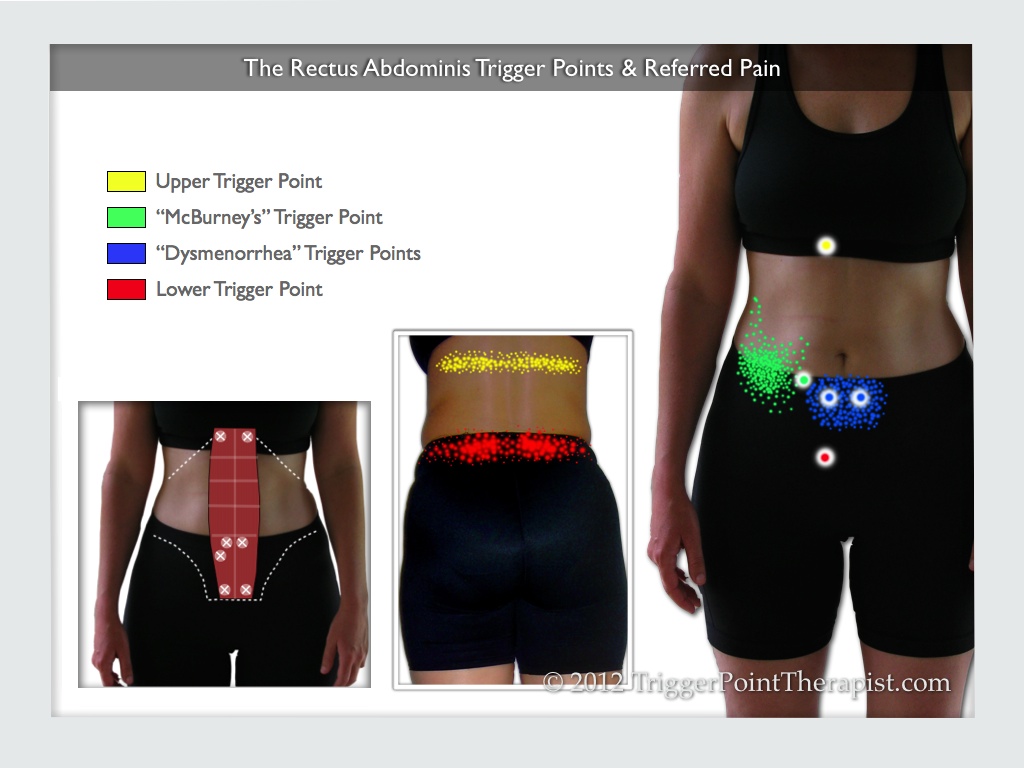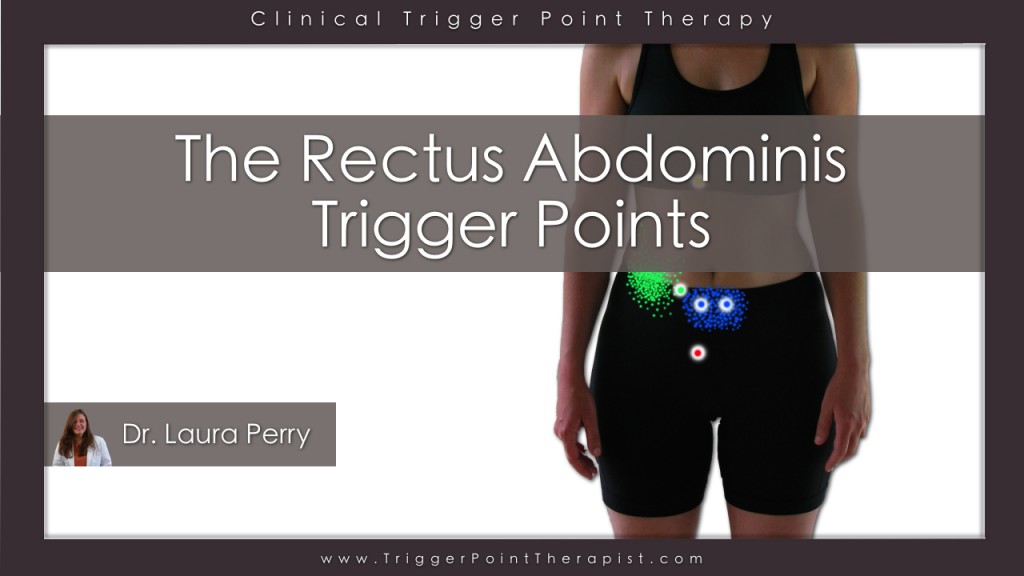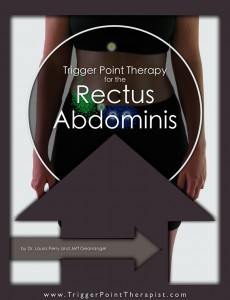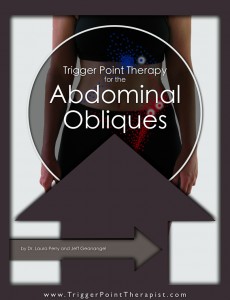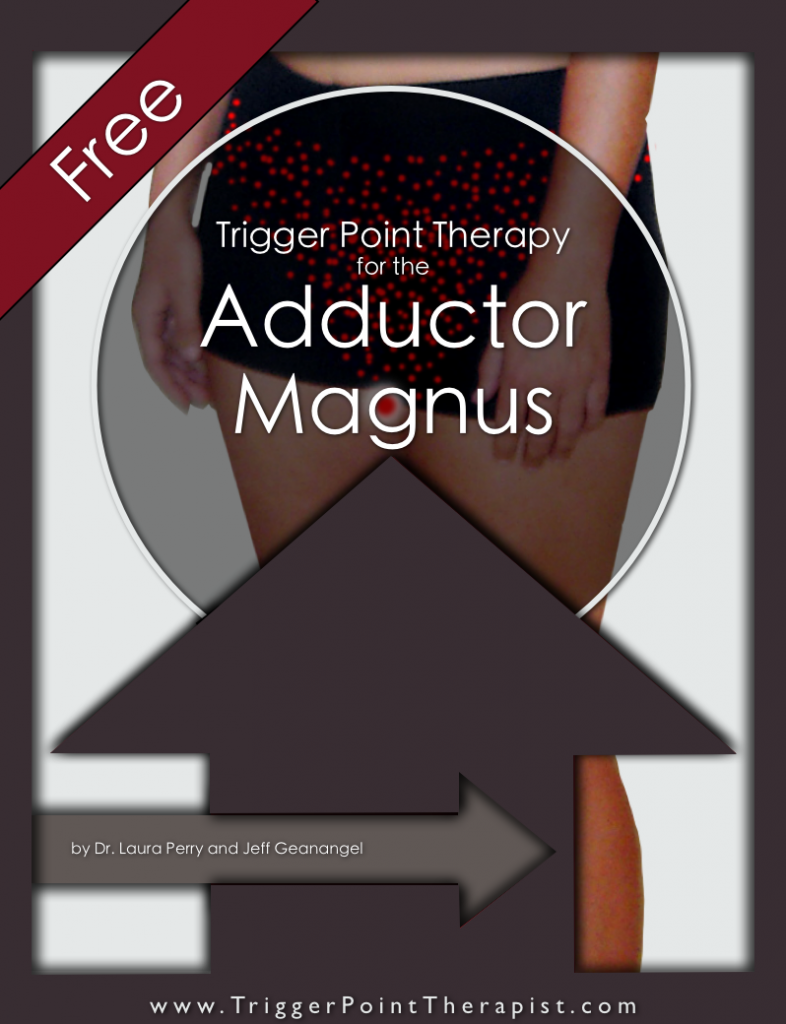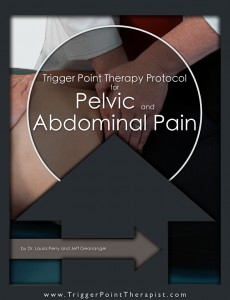The trigger points in the rectus abdominis muscle are biological con artists. They cause all kinds of trouble and fool us into believing that the blame lies elsewhere in our body.
One way they do this is by projecting pain across the midline of the body. Most trigger points refer pain only to the side of the body in which they are located, but the pain from rectus abdominis trigger can extend to the other side of the body, in a bilateral distribution.
And, though these trigger points are located on the front of the body, some of them project pain into the low back and mid back regions.
These trigger points may even fool us into believing that the pain they create is coming from internal organ ailments, such as ulcers, diverticulitis, indigestion, appendicitis, and even gynecological disorders.
Understanding these sneaky trigger points is the first step towards eliminating them.
The Rectus Abdominis Muscle
Location: The rectus abdominis is the muscle that comprises the anterior abdominal wall, also know as the “six pack”.
Function: The rectus abdominis, along with the other “core” abdominal muscles, function to form the foundation for all gross movements of the body. Contraction of these muscles occurs in advanced of bodily movement to stabilize the spine in position and allow it to serve as a base for other muscles to act against. This stabilizing contraction flows from the inside out, beginning with the tranversus abdominis, followed by the internal oblique, external oblique, and finally the rectus abdominis (and lumbar multifidus).
The abdominal muscles also contract together to increase intra-abdominal pressure, facilitating urination, bowel movements, vomiting, child birth, venous blood flow out of the abdomen, and forced exhalation.
Muscle Attachments: This muscle attaches superiorly to the costal cartilages of the fifth, sixth, and seventh ribs, and runs downward to its inferior attachment along the crest of the pubic bone.
Muscle Actions: Contraction of this muscle produces flexion of the trunk (spine) and pelvis.
The skeletal landmarks,muscular attachments, and muscle actions of the rectus abdominis are shown in an excerpt from the Trigger Point Therapy for the Rectus Abdominis Video Download at the end of this article.
The Rectus Abdominis Trigger Points
The diagram below shows the four trigger points that can form in this muscle.
- The lower trigger point lies just above the muscle’s inferior attachment to the pubic bone.
- The upper trigger point lies just under the muscle’s superior attachment to the rib cartilages.
- The lateral trigger point lies on the outside margin of the muscle, a couple inches below the belly button.
- The central trigger point lies a few inches below the belly button, near the midline.
- It should be noted that these trigger points typically occur in bilateral pairs.
Rectus Abdominis Muscle Pain
The diagram above also shows the referred pain patterns associated with the rectus abdominis trigger points.
- The lower trigger point refers pain across the low back at the belt line, and into the sacroiliac joints, bilaterally.
- The upper trigger point refers pain across the middle of the back at the level of the thoracolumbar junction (bra line). It may also refer pain to the region around the xyphoid process and across the abdomen to the ribcage region on the other side of the body. The upper trigger point on the left side may also produce symptoms such as abdominal fullness or bloating, heartburn, nausea, and indigestion.
- The lateral trigger point refers pain and tenderness in the lower quadrant of the abdomen on the same side. If this trigger point occurs on the right side, it is called the “McBurney’s trigger point” as it mimics the pain associated with appendicitis.
- The central trigger point(s) are known as the “Dysmenorrhea trigger points” for their ability to make menstruation painful.
Rectus Abdominis Symptoms & Disorders
Clients with active rectus abdominis trigger points will present with any or all of the following symptoms or clinical findings:
- Low Back Pain: bilateral pain along the hip crests and in the sacroiliac joints.
- Mid Back Pain: bilateral pain across the mid back region, at the base of the rib cage.
- Abdominal Pain: Pain around the xyphoid process in the epigastric region and pain the lower quadrants of the abdomen.
- Gastrointestinal Symptoms: Abdominal pressure or discomfort, heartburn, nausea and vomiting, diarrhea, appendicitis-type pain, colic or diverticulitis, and gall bladder/gall stone-type pain
- Gynecological Symptoms: painful menstruation and pain in the genitalia
What Causes Rectus Abdominis Trigger Points?
The following events or activities may activate or reactivate the rectus abdominis trigger points:
- New or intense abdominal exercise program
- Punching or kicking from cardio-kickboxing or martial arts class
- Visceral disease such as peptic ulcer or intestinal parasite
- Abdominal surgery scar
- Impact trauma to the abdomen
- Constipation related straining during bowel movements
- Extensive coughing or heavy breathing related to exercise
- Emotional and mental stress
Related Disorders
- Visceral Disease: Trigger points in the rectus abdominis muscle can create visceral dysfunction or be created by visceral dysfunction. Often, the pain and symptoms associated with an internal pathology that has been resolved will be perpetuated by trigger point activity in the abdominal musculature.
Treatment of Abdominal Trigger Points
Step-by-step instructions for locating and releasing these trigger points is available in the Trigger Point Therapy for Rectus Abdominis Video Download or the Trigger Point Therapy for the Rectus Abdominis Booklet for the iPad.
Click on the image below to watch an excerpt from the Rectus Abdominis Trigger Points video on YouTube:
Related Articles:
- Adductor Magnus Trigger Point: The PMS Trigger Point
- Abdominal Oblique Trigger Points: South of the Border Pain
Related Instructional Videos:
